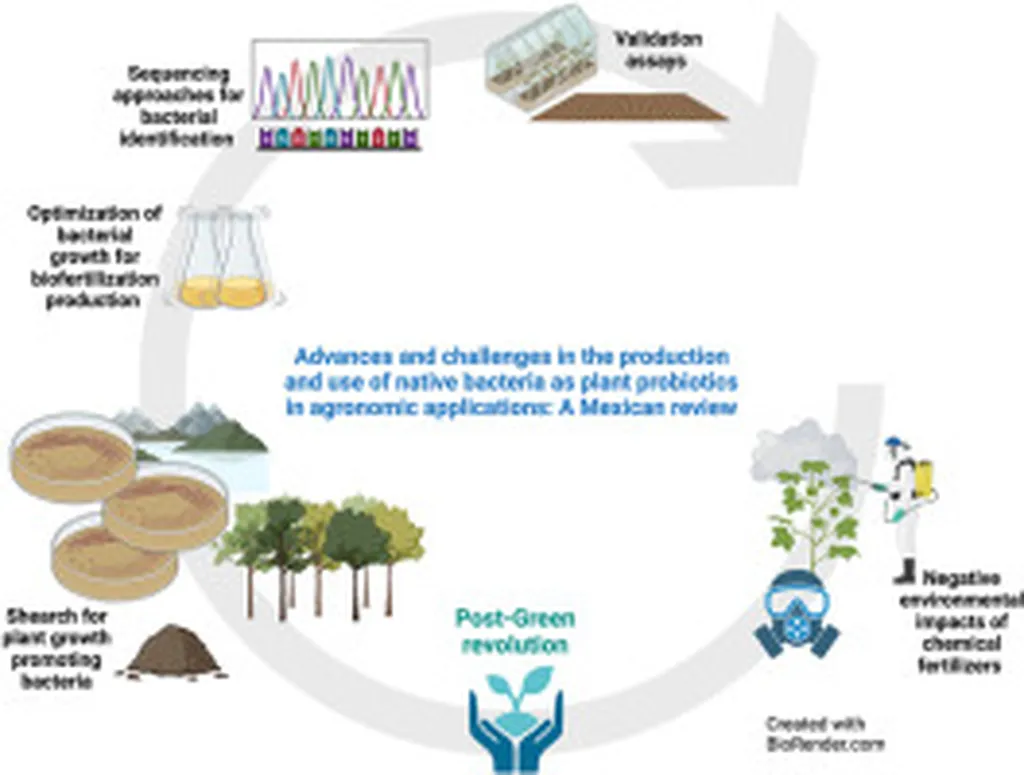In the heart of Mexico, at the Universidad Michoacana de San Nicolás de Hidalgo, a team of researchers led by Ramón Pelagio-Flores has been unraveling the secrets of a century-old agricultural ally: Azospirillum. This genus of bacteria, first discovered in 1925 by Martinus Willem Beijerinck, has been the subject of extensive study, revealing its potential to revolutionize plant growth and nutrient acquisition, with significant implications for the agricultural sector.
Azospirillum’s benefits extend beyond mere nitrogen fixation. “We’ve found that these bacteria activate mechanisms for acquiring phosphorus and iron, two essential nutrients for plants,” explains Pelagio-Flores. This discovery opens new avenues for reducing fertilizer use, a significant cost and environmental concern for farmers. The bacteria also produce hormones like auxins and cytokinins, which promote root branching and overall plant development, leading to better growth and productivity.
The research, published in *Plant Signaling & Behavior* (which translates to *Plant Signaling & Behavior* in English), highlights the role of Azospirillum’s structural elements, such as flagellin and lipopolysaccharides, as elicitors that influence plant development and defense. This means that Azospirillum doesn’t just feed plants; it also helps them fend off threats, a dual benefit that could be a game-changer for crop resilience.
The commercial impacts of this research are substantial. In countries like Argentina and Brazil, biotechnological products formulated with Azospirillum have already shown promising results. These products can save farmers money on fertilizers, optimize management practices, and make agriculture more sustainable. As the global population grows and the demand for food increases, such innovations become increasingly vital.
Pelagio-Flores envisions a future where Azospirillum-based products are widely adopted, not just in Latin America but worldwide. “The potential is enormous,” he says. “We’re talking about a shift in how we approach plant nutrition and growth promotion, one that could make agriculture more efficient and eco-friendly.”
The research also sheds light on the molecular mechanisms underlying Azospirillum’s effects, including the role of the Target Of Rapamycin (TOR) kinase in signal transduction. Understanding these mechanisms could lead to even more targeted and effective applications in the future.
As the world grapples with the challenges of climate change and food security, the insights from this research offer a beacon of hope. Azospirillum, a humble bacterium first discovered a century ago, could very well be the key to a more sustainable and productive agricultural future. The journey of this microscopic ally is far from over, and the next chapter promises to be as exciting as the last.

